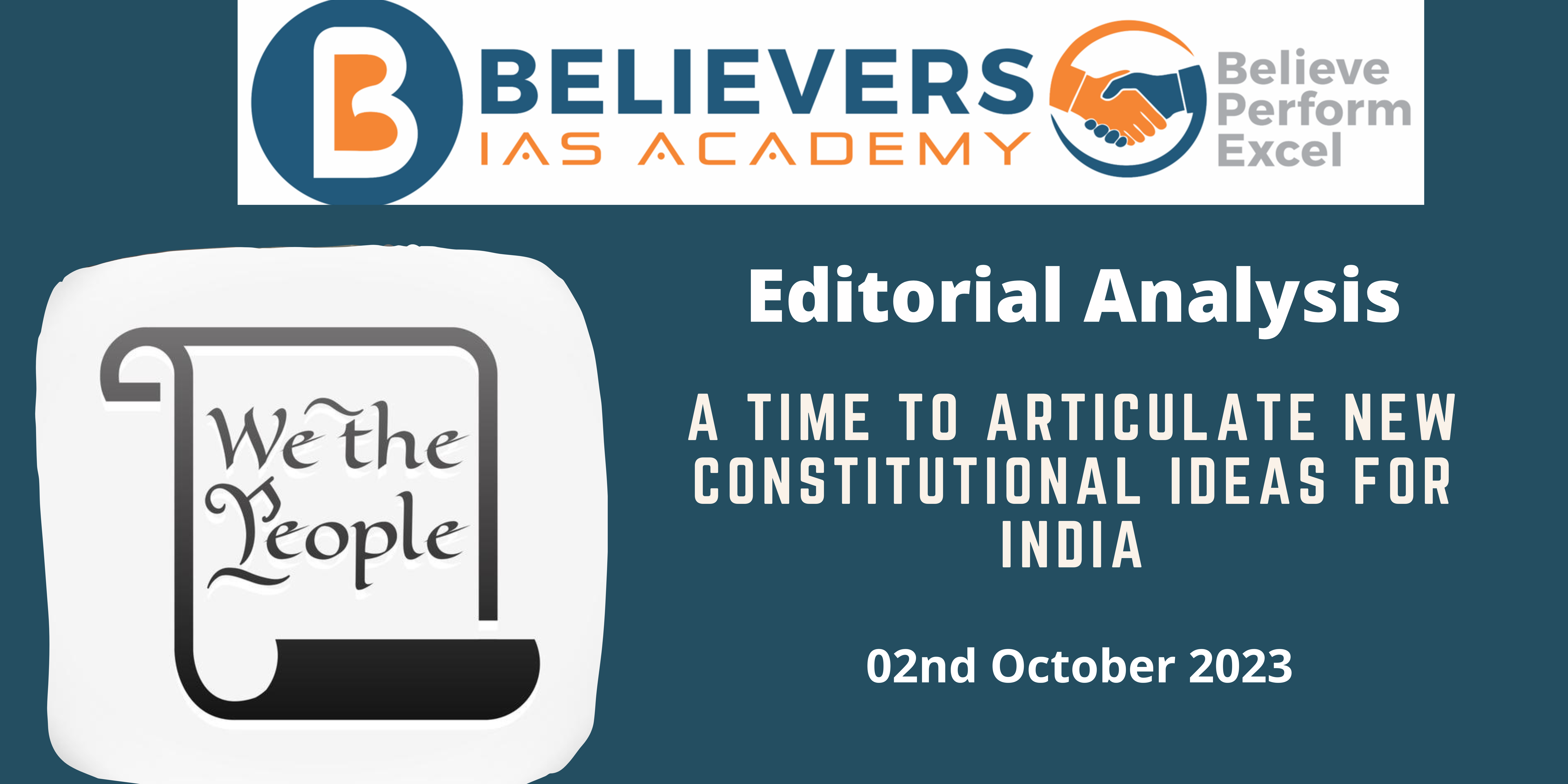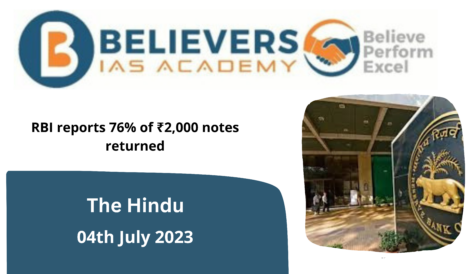A time to articulate new constitutional ideas for India.
Context:
The Indian government has undertaken a mission to decolonize the country. This endeavor has witnessed the replacement of iconic buildings and a shift towards using the name “Bharat” alongside “India.” As the nation undergoes these changes, it prompts us to question whether the Constitution should also evolve. If so, in what manner, and guided by whose principles?
Relevance:
GS-01, GS-02 (Indian Constitution, Freedom Struggle, Important personalities)
Prelims:
- Freedom Struggle, Gandhian Ideology, Basic structure of the Constitution.
Mains Question:
Discuss the historical perspectives of constitutional ideas in India and the role of visionaries like Mahatma Gandhi and B.R. Ambedkar. Analyze the relevance of revisiting these ideas in contemporary India.
Dimensions of the Article:
- Mahatma Gandhi’s Vision
- The Idea of Swaraj
- The Gandhian Constitution
- Limitations of the Gandhian Constitution
- The Role of B.R. Ambedkar
- B.R. Ambedkar’s Vision and Gandhi’s Disagreements
- The Pragmatic Decision
- Contemporary Relevance
- Crafting New Constitutional Ideas
- Gandhi’s Fundamental Question
Mahatma Gandhi’s Vision:
- Mahatma Gandhi, well before the Constitution of India came into force in 1950, presented an innovative indigenous vision of what the constitution should embody.
- In 1908, he highlighted the importance of decolonizing not just governance but also the very nature of the government.
- Gandhi’s vision aimed to build a constitution based on ancient village republics, favoring decentralized governance.
The Idea of Swaraj:
- For Gandhi, true “swaraj” or self-rule could only be achieved if the constitution was grounded in the principles of self-sufficiency at the grassroots level, emphasizing local markets and self-reliance.
- His vision challenged the conventional notion of a centralized government in Delhi.
The Gandhian Constitution:
- To translate Gandhi’s ideas into action, Shriman Narayan Agarwal was tasked with drafting the “Gandhian Constitution for Free India.”
- However, this draft was more of a moral code than a legal document, intertwining rights with a duty to be loyal to the state.
Limitations of the Gandhian Constitution:
- While Gandhi’s vision had moral value, it posed practical challenges. Defining and measuring loyalty to the state could lead to potential oppression, making it legally unfeasible.
- This realization led Gandhi to distance himself from the Gandhian Constitution.
The Role of B.R. Ambedkar:
- In 1947, as India was on the cusp of independence, Gandhi recognized the need for a constitution that could garner widespread consensus.
- He persuaded Rajendra Prasad to appoint B.R. Ambedkar as the Chairperson of the Drafting Committee, knowing that Ambedkar had a distinctly different vision from his.
B.R. Ambedkar’s Vision and Gandhi’s Disagreements:
- Ambedkar advocated for a strong state capable of maintaining law and order, especially in remote regions. He believed in state intervention to manage the economy and control industries for the common good.
- His vision also included fundamental rights as a means to combat historical injustices such as casteism.
- Gandhi disagreed profoundly with Ambedkar on various fronts, including the size of the state and its role in the economy. Gandhi believed that lasting change could only be achieved through individual transformation, not policies enforced by the state.
The Pragmatic Decision:
- Despite these differences, Gandhi recognized that Ambedkar’s ideas enjoyed broad political support. Thus, he allowed his ideal constitution to wait for its moment while acknowledging the need for a constitution grounded in consensus.
Contemporary Relevance:
- Today, India is in a state of transformation similar to that in 1908 when Gandhi penned “Hind Swaraj.” This is an opportune moment to reconsider constitutional ideas that align with modern India’s needs.
- It is essential to draw inspiration from both Ambedkar’s vision and the radical ideas Gandhi proposed but were overlooked.
Crafting New Constitutional Ideas:
- Rather than drafting a new constitution, the focus should be on articulating a vision for fresh constitutional ideas that address India’s governance challenges.
- This vision should draw not only from the existing Constitution crafted by Ambedkar but also from the radical Gandhian ideas that were considered too radical at the time.
Gandhi’s Fundamental Question:
- This revisiting is not about advocating for a pre-modern approach but rather about addressing the fundamental question that Gandhi posed: What kind of constitution can bring good governance to India?
- The urgency during the tumultuous years of 1947-1950 necessitated bypassing this question, but after 75 years, it is time to address it.
Way Forward and Conclusion:
- Revisiting constitutional ideas should be a thoughtful and deliberative process. Unlike names and buildings, constitutions should not change hastily, but they should remain open to adaptation and improvement.
- The historical perspectives of constitutional ideas in India, championed by Mahatma Gandhi and B.R. Ambedkar, offer valuable insights. It is crucial to acknowledge the differences in their visions and the pragmatic decisions made during the nation’s formative years.
- Now, as India undergoes significant transformations, there is an opportunity to revisit and reframe constitutional ideas that align with contemporary challenges and aspirations.




